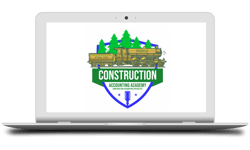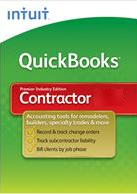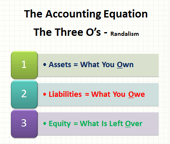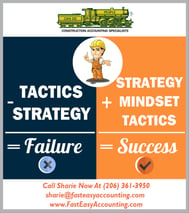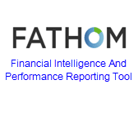
Get that one thing working, then move on to the next one. What is the most annoying thing you can quickly fix? We talk about accounting because that is our primary focus.
Start with the basics:
- Open a business checking account.
- Use a dedicated credit card for the business (if using a personal card).
- Create invoices, present them to your customers, collect the money, and get it in the bank (Do you have an easy way for your clients to pay you?).
- Collect the money ASAP because, without cash flow, you are out of business.
Basics of Income and Expenses
As a construction business owner, you must understand how you generate and spend money. This way, you can maintain fiscal responsibility while also promoting business growth.
Income Statements (Profit & Loss) versus Cash Flow
Business owners should always stay on top of the latest cash flow analyses and projections to make smart short-term financial decisions. Remember, a P&L doesn't tell you if you can pay your bills or how liquid your business is. Keep that in mind!
Operating Cash Flow
Understanding a company's operating cash flow is vital for assessing its performance and cash runway.
Gross Sales versus Net Profits
As a small business owner, paying attention to sales and expenses is vital to ensure a healthy and well-managed business. Remember, gross sales don't equal net profits. Understanding every expense, knowing the industry averages, and having enough cash to thrive long-term are crucial.
Reading a Balance Sheet
It's important to understand the line items on a balance sheet. Taking a deep dive into these details can provide valuable insights into your financial well-being. Soon, you will instinctively know if something doesn't look right.
Return on Equity
This concept helps us decide whether to keep investing in the business or consider other investment options. You see, there are always opportunity costs to consider for every investment.
Materials
A construction contractor may purchase material and resell it to their customer. Thereby thinking it is a reimbursable expense. (You lose money when doing this).
Remember all invoices to the Customer (Retail, General Contractor, Spec Builder, Developer) are income. Every line item on a customer invoice is ALL INCOME. If the words are on the invoice, then the invoice is either taxable or non-taxable based on other factors. Washington State, for instance, has a clear explanation.
Purchases for the material are Cost of Goods Sold or are expenses if you are short-cutting your accounting. I have seen financial statements backed out because they will reflect reimbursable income as a negative number, thereby showing it as a deduction. (The net effect is double dipping on the expense side.) The cause is that the accounting software is not correctly set up.
Cost of Goods Sold
It's imperative to clearly understand the cost involved in producing your products or services. If you're unsure how much it costs to provide your services, it's hard to know how much you'll have left to cover your overhead expenses.
For example, a material receipt arrives at the regular bookkeeper's desk from a lumber supplier, and they open the QuickBooks contractor file, look up the supplier to determine how the previous lumber purchase was coded, and proceed to code the new transaction the same way.
The problem is that each transaction is unique and could go into any of a dozen accounts or item codes depending upon whether it is a direct cost, indirect cost, WIP, retention, warranty, overhead, administrative, or other costs, or simply an expense. The cumulative effect of these bookkeeping errors in one month can do enough damage to the financial and job cost reports to bankrupt a contractor eventually.
Accounts Payable and Accounts Receivable
Managing cash flow through digital tools for Accounts Payable (AP) and Accounts Receivable (AR) is crucial. After all, cash is king for small businesses!
No - the company with the most Accounts Receivable or Accounts Payable does not win a prize.
- Accounts Receivable means your customers owe you money.
- Accounts Payable means you owe money to your suppliers.
- Net Profit is the money left over. You want lots of Net Profit!
- You are not a banker! Stop borrowing money using your credit cards, Loans, and Lines of Credit, then finance customers' projects at 0% interest.
Working capital
Monitoring working capital is vital for ensuring the business has enough funds to operate smoothly. You can get loans if you can't get enough working money because of seasonality or other external factors. A working capital ratio between 1.2 and 2 signifies a healthy business to lending companies. The operating capital ratio shows the percentage of assets to liabilities, i.e., how often a company can pay off its current liabilities with its existing assets. The working capital ratio calculation is Working Capital Ratio = Current Assets / Current Liabilities.
We are deeply passionate and committed to the construction industry and want to support you, our clients, and our readers to achieve your definition of success. Whether you're a contractor, owner, spouse, business professional, bookkeeper, or accountant, we understand your frustrations because we've been where you are now and are here to help.
We have proudly produced 12 classes in our Construction Accounting Academy. Each course was designed for QuickBooks users from all levels - Beginner to Experienced. Our goal is to provide the student with suitable and valuable information to build a construction accounting system specific to their type of construction business and company role.
As with every type of business, having the right tools can help you work efficiently and effectively. The key to your business profitability lies in understanding the critical concepts of construction accounting. Now that the tools are available online and accessible 24/7, it's up to you to leverage and implement the power of knowledge.
To wrap things up
A solid understanding of these key financial concepts enables you to make informed decisions, effectively manage your finances, and strategically drive your businesses' growth and long-term success.
With financial acumen, you can identify expansion opportunities, mitigate risks, and build a sustainable foundation for your business ventures.
Don't navigate your finances alone – we're here to help.
About The Author:
![]() Sharie DeHart, QPA, co-founded Business Consulting And Accounting (Fast Easy Accounting) in Lynnwood, Washington. She is the leading expert in managing outsourced construction bookkeeping and accounting services companies and cash management accounting for small construction companies across the USA. She encourages Contractors and Construction Company Owners to stay current on their tax obligations. She offers insights on managing the remaining cash flow to operate and grow their construction company sales and profits so they can put more money in the bank. Call 1-800-361-1770 or sharie@fasteasyaccounting.com
Sharie DeHart, QPA, co-founded Business Consulting And Accounting (Fast Easy Accounting) in Lynnwood, Washington. She is the leading expert in managing outsourced construction bookkeeping and accounting services companies and cash management accounting for small construction companies across the USA. She encourages Contractors and Construction Company Owners to stay current on their tax obligations. She offers insights on managing the remaining cash flow to operate and grow their construction company sales and profits so they can put more money in the bank. Call 1-800-361-1770 or sharie@fasteasyaccounting.com
OUTSOURCED ACCOUNTING FOR
THE BUSY CONTRACTOR
IN A MOBILE ENVIRONMENT
 |
 |
 |
 |
Download the Contractors APP today from the App Store or Android Store
Access Code: FEAHEROS
Click here to download the App on Android:
Click here to download the App on iOS:
Scan the QR code or search for ‘MyAccountants’ in the App Store. Enter the Access code: FEAHEROS to utilize the powerful App features and capabilities and benefit from having our Construction Accounting App at your fingertips, 24/7."
PS: Even if you are not a Construction Contractor, you will find plenty of benefits in the app, so we invite you to download it too! It's Free, so why not?






